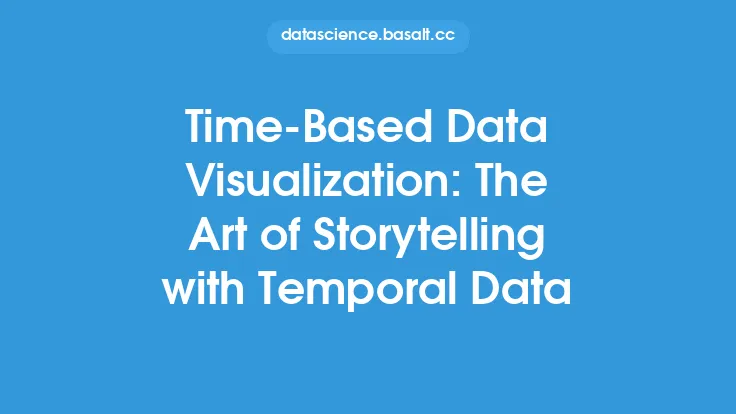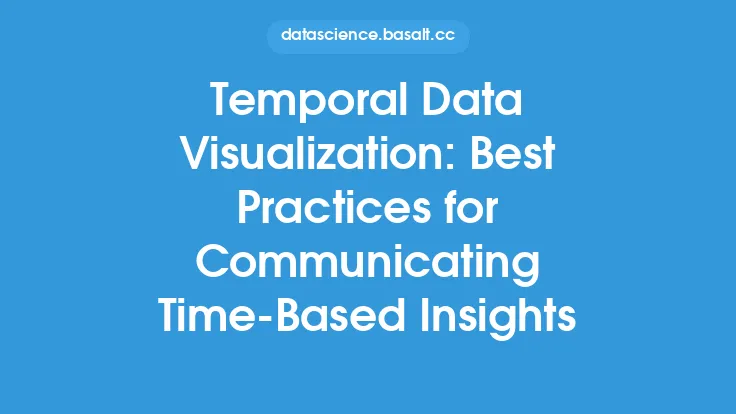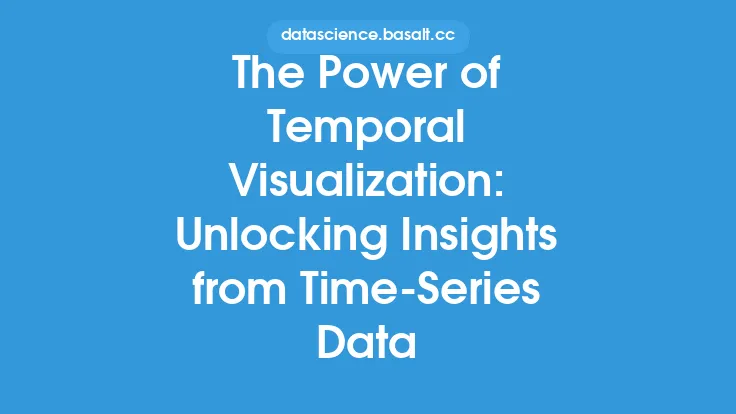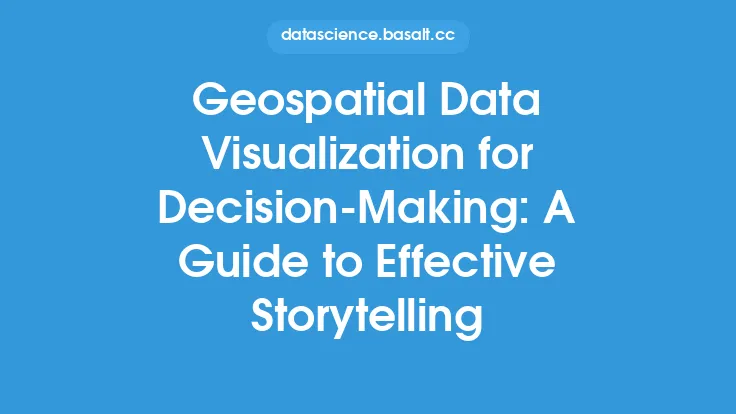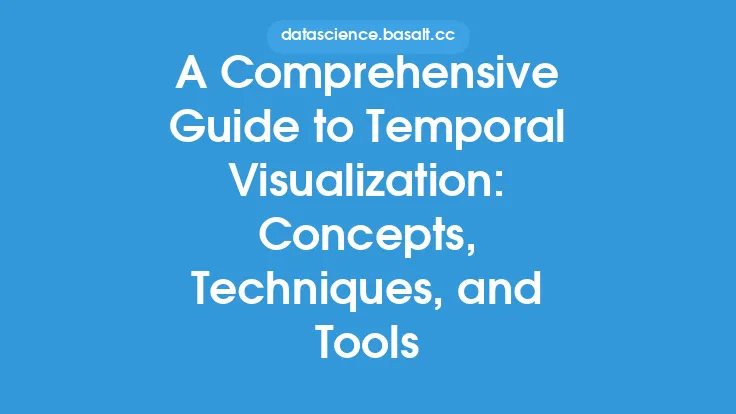Temporal visualization is a crucial aspect of data visualization that deals with the representation of time-based data. It involves the use of various techniques and tools to effectively communicate insights and patterns in data that vary over time. The primary goal of temporal visualization is to provide a clear and concise visual representation of time-series data, enabling users to understand trends, patterns, and relationships that may not be immediately apparent from the raw data.
Introduction to Temporal Data
Temporal data refers to any type of data that is associated with a specific point in time or a time interval. This can include data such as stock prices, weather patterns, website traffic, or sensor readings, among others. Temporal data can be further categorized into different types, including discrete-time data, continuous-time data, and event-based data. Discrete-time data is collected at specific points in time, such as daily or hourly intervals, while continuous-time data is collected continuously over a period of time. Event-based data, on the other hand, is collected in response to specific events or occurrences.
Types of Temporal Visualization
There are several types of temporal visualization techniques, each with its own strengths and weaknesses. Some of the most common types of temporal visualization include:
- Time-series plots: These are used to display data that varies over time, such as stock prices or website traffic. Time-series plots typically involve plotting the data points against a time axis, with the x-axis representing time and the y-axis representing the value of the data.
- Gantt charts: These are used to display schedules or timelines, such as project timelines or resource allocation. Gantt charts typically involve plotting the tasks or activities against a time axis, with the x-axis representing time and the y-axis representing the tasks or activities.
- Heat maps: These are used to display data that varies over time and across different categories, such as website traffic by hour of day and day of week. Heat maps typically involve plotting the data points against a two-dimensional grid, with the x-axis and y-axis representing the different categories and the color of the grid representing the value of the data.
- Stream graphs: These are used to display data that varies over time and across different categories, such as website traffic by hour of day and day of week. Stream graphs typically involve plotting the data points against a two-dimensional grid, with the x-axis and y-axis representing the different categories and the width of the stream representing the value of the data.
Techniques for Effective Temporal Visualization
There are several techniques that can be used to create effective temporal visualizations. Some of the most important techniques include:
- Using a clear and consistent time axis: This involves using a consistent format for displaying time, such as using a 24-hour clock or displaying dates in a specific format.
- Using appropriate scaling: This involves using a scale that is appropriate for the data being displayed, such as using a linear scale for data that varies linearly over time or a logarithmic scale for data that varies exponentially over time.
- Using color effectively: This involves using color to draw attention to specific patterns or trends in the data, such as using a specific color to highlight peaks or troughs in the data.
- Using interactive elements: This involves using interactive elements, such as hover text or zooming, to enable users to explore the data in more detail.
Tools for Temporal Visualization
There are several tools that can be used to create temporal visualizations, including:
- Tableau: This is a popular data visualization tool that provides a range of features for creating temporal visualizations, including time-series plots, Gantt charts, and heat maps.
- Power BI: This is a business analytics service by Microsoft that provides a range of features for creating temporal visualizations, including time-series plots, Gantt charts, and heat maps.
- D3.js: This is a JavaScript library for producing dynamic, interactive data visualizations in web browsers. It provides a range of features for creating temporal visualizations, including time-series plots, Gantt charts, and heat maps.
- Matplotlib: This is a plotting library for the Python programming language that provides a range of features for creating temporal visualizations, including time-series plots, Gantt charts, and heat maps.
Challenges and Limitations of Temporal Visualization
There are several challenges and limitations associated with temporal visualization, including:
- Dealing with large datasets: Temporal visualization often involves dealing with large datasets that can be difficult to visualize effectively.
- Dealing with complex data: Temporal visualization often involves dealing with complex data that can be difficult to understand and interpret.
- Ensuring consistency: Temporal visualization often involves ensuring consistency in the display of time, which can be challenging, especially when dealing with data from different sources.
- Ensuring accuracy: Temporal visualization often involves ensuring accuracy in the display of data, which can be challenging, especially when dealing with complex data.
Best Practices for Temporal Visualization
There are several best practices that can be followed to create effective temporal visualizations, including:
- Keeping it simple: This involves avoiding clutter and using simple, intuitive visualizations that are easy to understand.
- Using clear and consistent labeling: This involves using clear and consistent labels for the x-axis, y-axis, and any other elements of the visualization.
- Using appropriate colors: This involves using colors that are appropriate for the data being displayed and that do not distract from the visualization.
- Providing interactive elements: This involves providing interactive elements, such as hover text or zooming, to enable users to explore the data in more detail.
Future of Temporal Visualization
The future of temporal visualization is likely to involve the development of new tools and techniques for creating interactive and dynamic visualizations. This may include the use of virtual reality (VR) and augmented reality (AR) to create immersive and interactive visualizations, as well as the use of machine learning and artificial intelligence (AI) to create visualizations that can adapt to the needs of the user. Additionally, the increasing availability of large datasets and the growing importance of data-driven decision making are likely to drive the development of new and innovative temporal visualization techniques.
